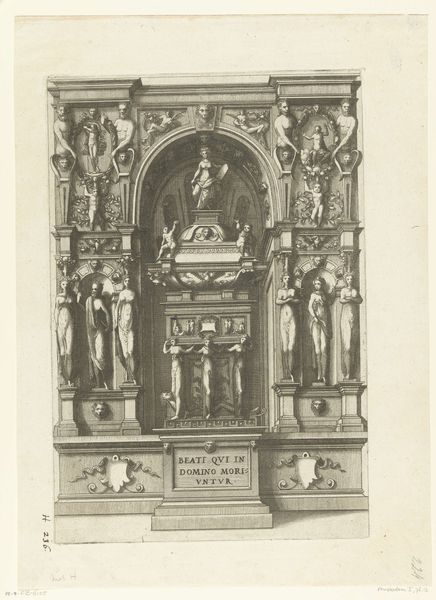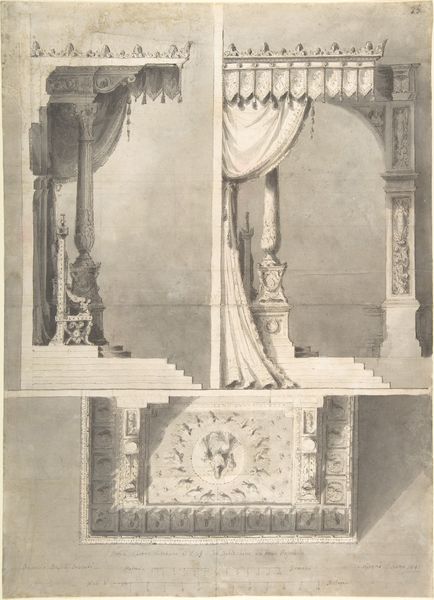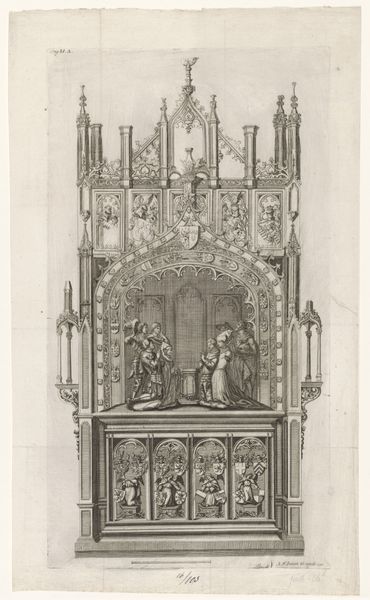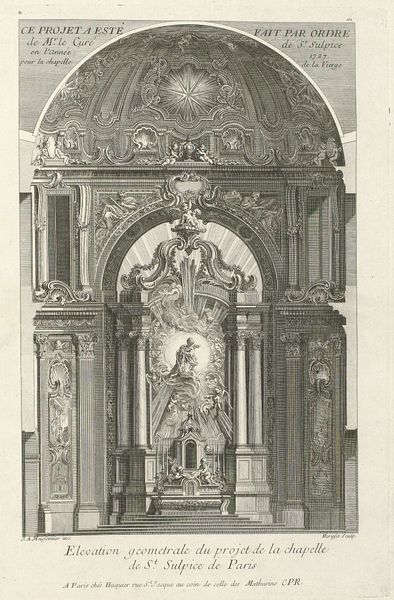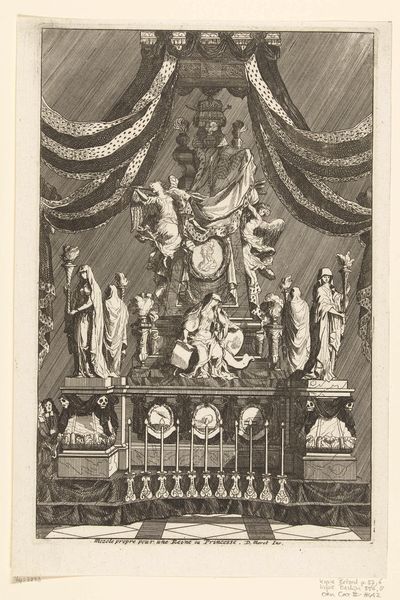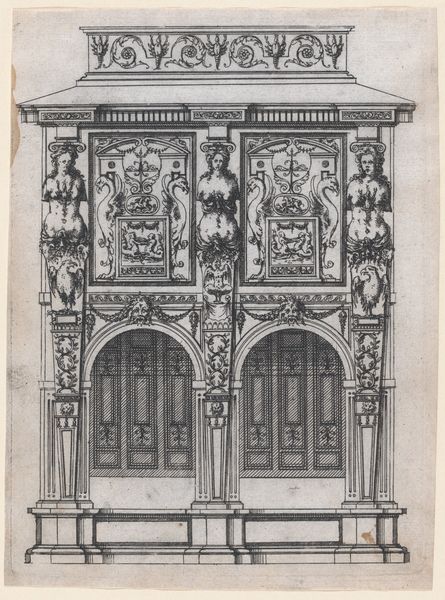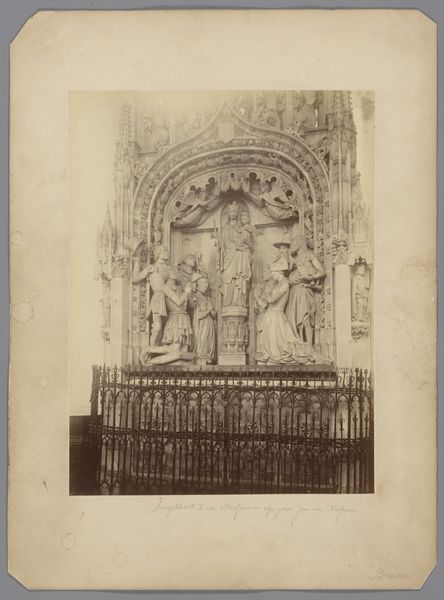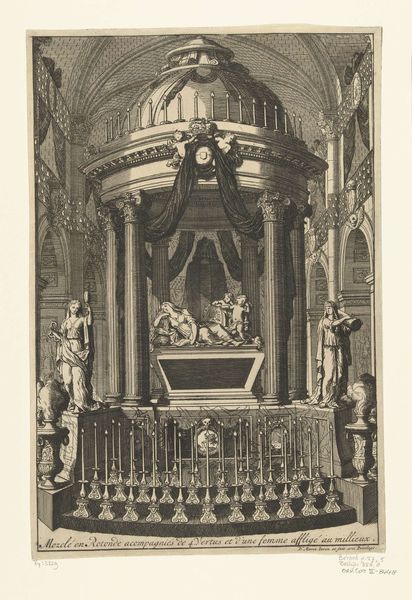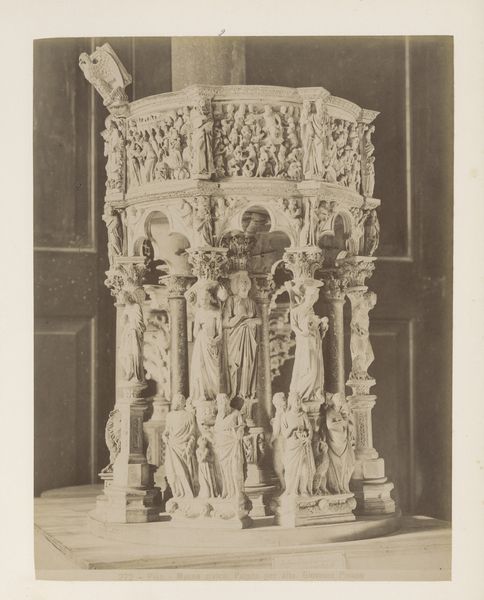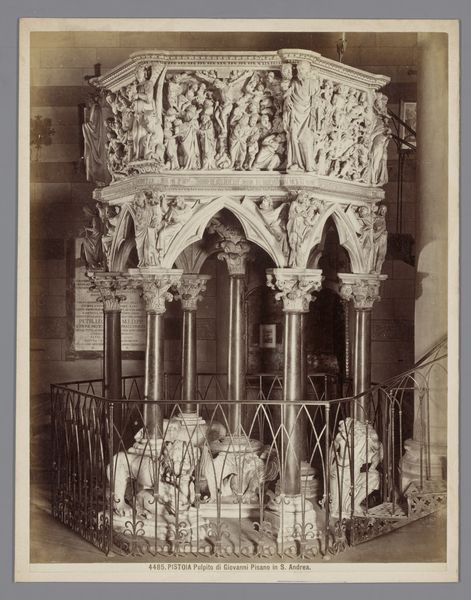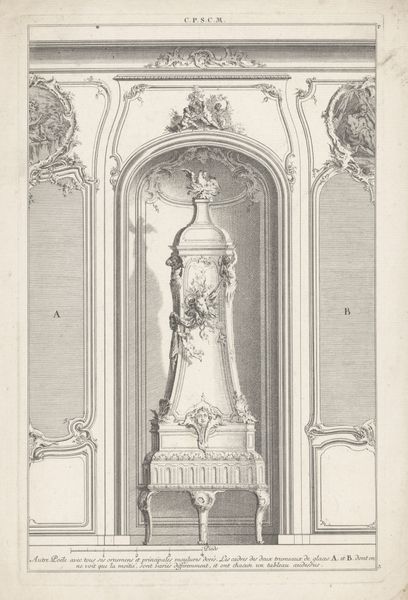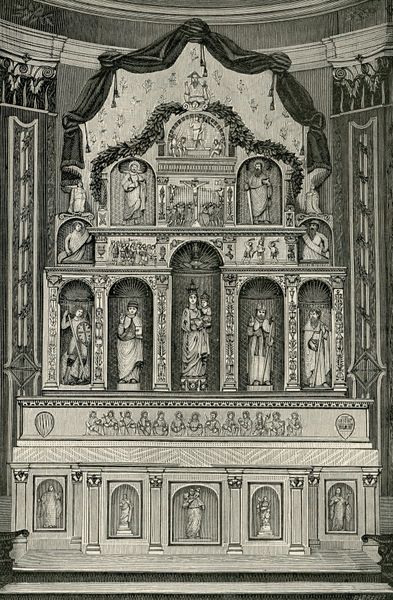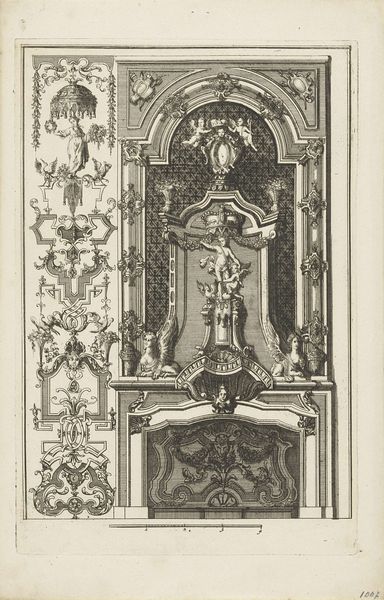
Grafmonument voor Engelbrecht I, graaf van Nassau-Dillenburg, Johanna van Polanen, Johan IV, graaf van Nassau-Dillenburg, en Maria van Loon-Heinsberg 1850 - 1930
0:00
0:00
Dimensions: height 205 mm, width 184 mm
Copyright: Rijks Museum: Open Domain
Editor: Here we have a photograph, dating from between 1850 and 1930, depicting the 'Grafmonument voor Engelbrecht I, graaf van Nassau-Dillenburg, Johanna van Polanen, Johan IV, graaf van Nassau-Dillenburg, en Maria van Loon-Heinsberg' – quite a mouthful! It shows a rather ornate monument, gothic in style, seemingly carved in relief. The mood is solemn and reverential, even a little intimidating. What captures your attention when you look at this work? Curator: Well, I find myself drawn to the interplay between photography and sculpture. The image captures the *idea* of gothic grandeur, while simultaneously flattening its three-dimensionality. It transforms the experience from a tactile engagement with marble into something more cerebral, a study of light and shadow frozen in time. Does that resonate with your experience, or do you see something different? Editor: I hadn't thought about that tension, actually! I was focusing on the story being told – the figures kneeling, the central Madonna, the elaborate ornamentation. But you're right, there's a layer of distance created by the photographic process itself. It’s a reproduction of a reproduction, almost! What can we say about the possible connection to Academic Art here? Curator: I feel that the photograph documents that style by being very precise in the image taken of the artwork which gives the audience clear images to study and appreciate what otherwise may be a grand installation. And who wouldn’t love such artistic access! Now it becomes accessible to study, appreciate and question – an experience shared in our time right here! So what is the greatest insight you gather about this artwork? Editor: Definitely understanding how the medium of photography impacts our perception of sculpture. It's not just a recording; it's a reinterpretation. Curator: Exactly. And hopefully we are both better informed on all that impacts our journey through appreciating artwork.
Comments
No comments
Be the first to comment and join the conversation on the ultimate creative platform.
